Growing fruit trees doesn’t have to be hard or feel impossible. You don’t have to live in a tropical paradise to grow apples, pears, bananas, and more. Many fruit trees thrive in Zone 7. On this list, we have 6 excellent options!
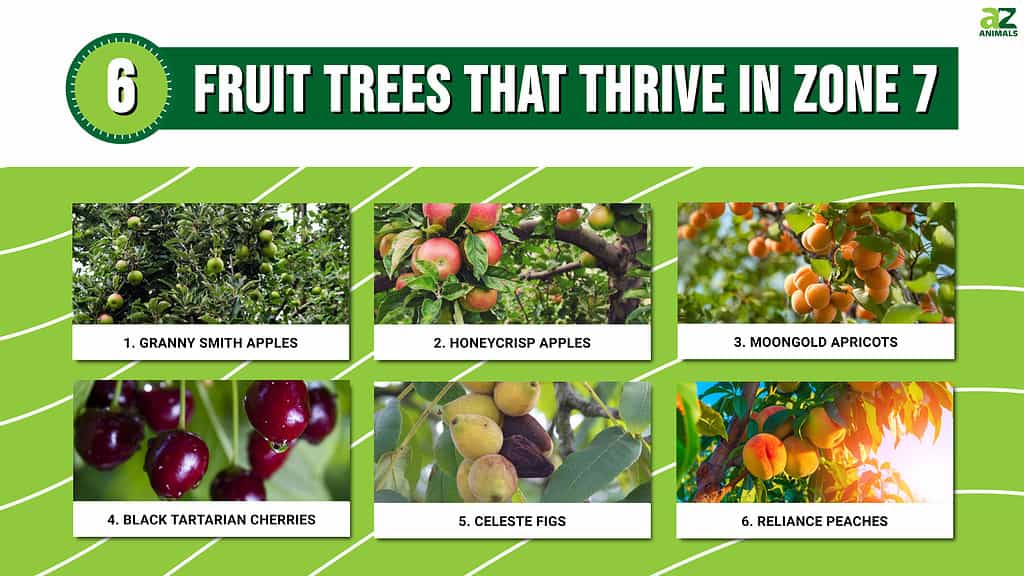
What Does USDA Zone 7 Mean?
Before we can dive into what trees grow best in USDA Zone 7, let’s learn more about what this numbering system means. USDA growing zones are based on the hardiness of a plant. It’s connected closely with temperature, specifically the average minimum temperature during winter. There are 13 major USDA zones, often divided into two parts, a and b. USDA Zone 7 is in the center.
USDA Zone 7 has a minimum average of temperatures of 0° to 10°F. This zone is then divided into two sub-zones, with only a 5°F difference. The differences are minimal. So, what states are zone 7? States can have multiple zones, depending on the region. However, there are 28 states in the U.S. with zone 7 areas. To list a few, some of these states are Alabama, Colorado, Oregon, Oklahoma, New Jersey, Washington State, and Maryland.
Although Zone 7 is known for cold winters, they aren’t usually brutal. Many plants still thrive under these conditions. Zone 7 areas are perfect for cool-weather greens like lettuce, spinach, arugula, and kale. It’s also a great place to plant herbs and nut trees.
Fruit Trees that Thrive in Zone 7
You aren’t limited in what plants, including fruit trees, you can grow while gardening in a Zone 7 area. This zone is great for growing fruit trees, especially frost-tolerant and hardy varieties. Listed below are six fruit trees that thrive in Zone 7.
1. Granny Smith Apples
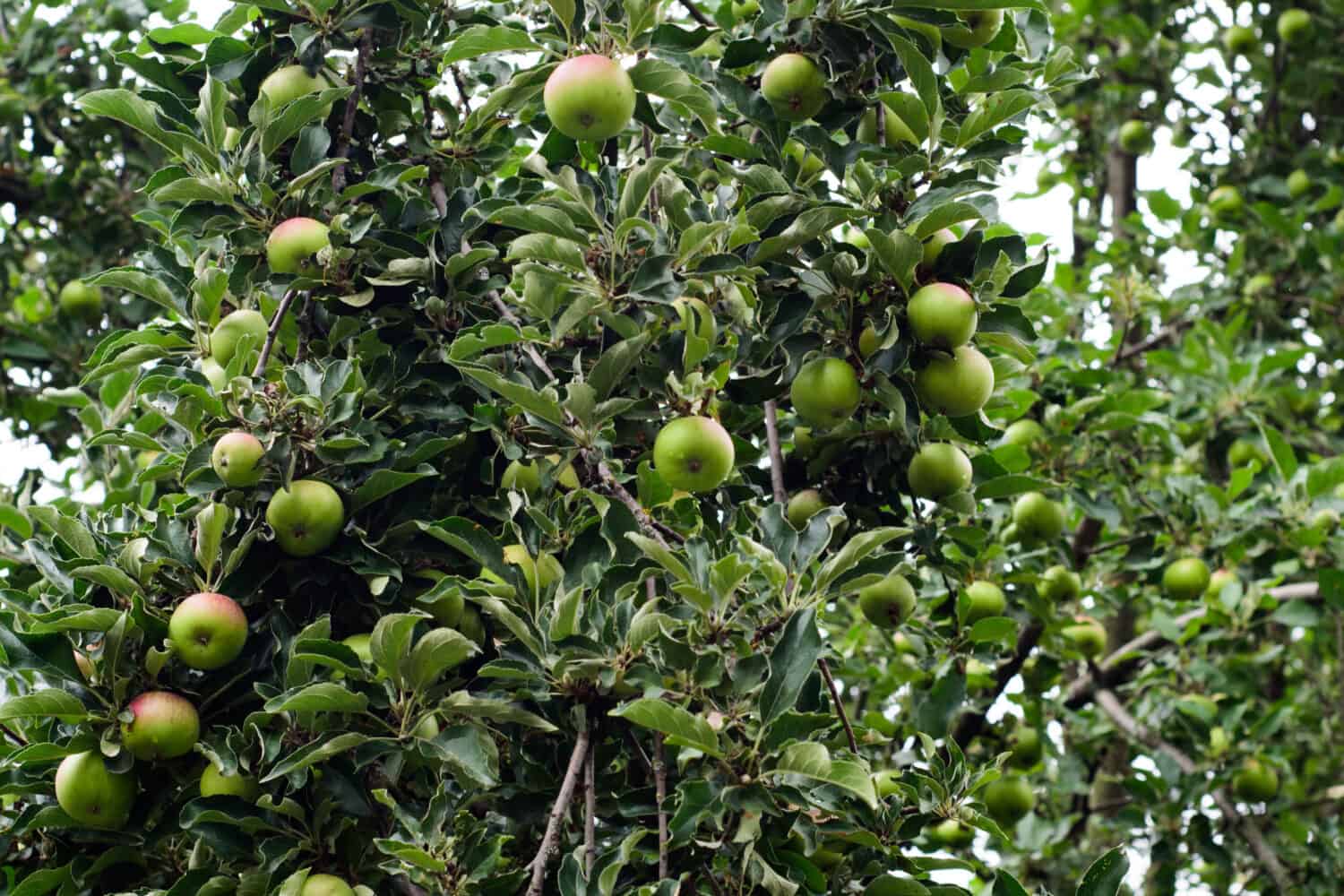
Granny Smith apples are bright green and sour.
©AnastasiiaLee/Shutterstock.com
The first tree on our list is the Granny Smith apple tree. Granny Smith apples are bright green apples that have a sour taste. They are also called sour green apples. Granny Smith apples are very popular. They were first cultivated in 1868 in Australia.
Granny Smith apple trees take time to grow. They can reach about 14 feet tall and 16 feet wide. It takes these trees about 3 to 5 years to bear fruit. Granny Smith apples are best grown in USDA zones 5 through 9.
2. Honeycrisp Apples
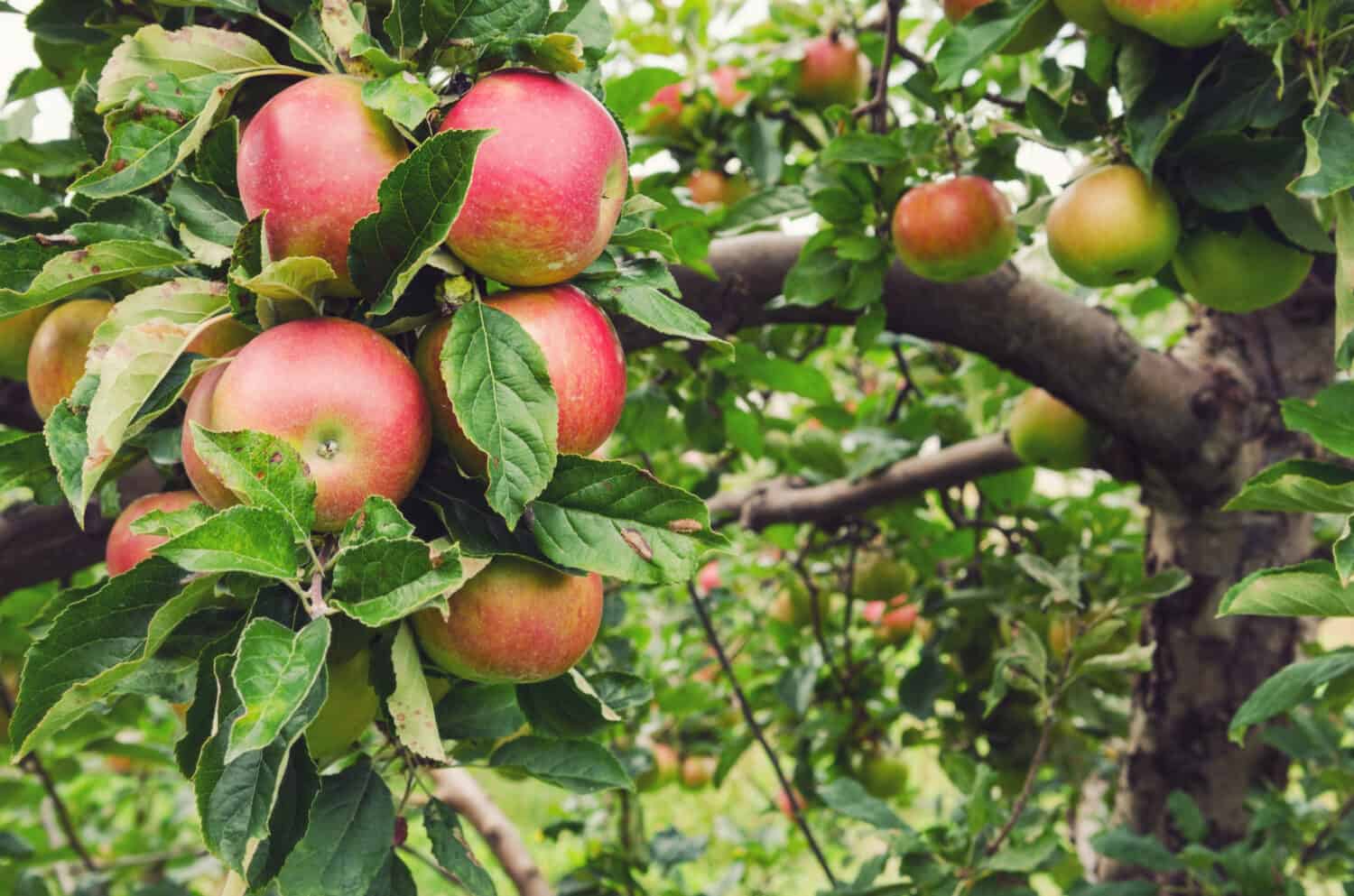
Honeycrisp apple trees thrive in USDA growing zones 3 to 7.
©Julie Marshall/Shutterstock.com
Another excellent apple tree you can grow in USDA Zone 7 is the Honeycrisp apple. It’s a very popular cultivar with a fairly recent history. Interestingly, this delicious fruit was released in 1991 but was first designated in 1974. This highly nutritious and juicy fruit is the state fruit of Minnesota.
Honeycrisp apples can be grown in USDA zones 3 to 7. However, depending on the variety, they may thrive in USDA zones 3 to 9.
3. Moongold Apricots
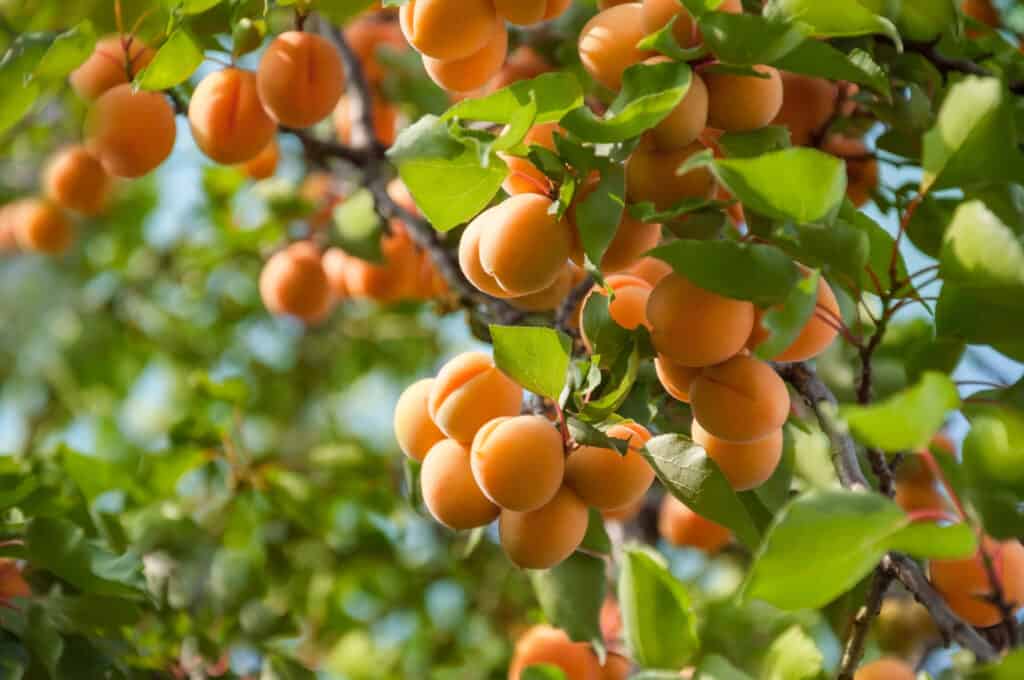
Moongold apricot trees produce delicious medium-sized orange fruit.
©iStock.com/Zoya2222
Moongold apricots are sweet, tender, and juicy. These delicious fruits aren’t tough to grow either but take time. Moongold apricots are medium-sized bright orange-yellow fruits. They ripen during late summer. Moongold apricot trees are best grown in USDA zones 4 to 8. These medium-sized trees require full sunlight and well-draining soil. Moongold apricot trees can take up to 5 years to produce fruit.
4. Black Tartarian Cherries
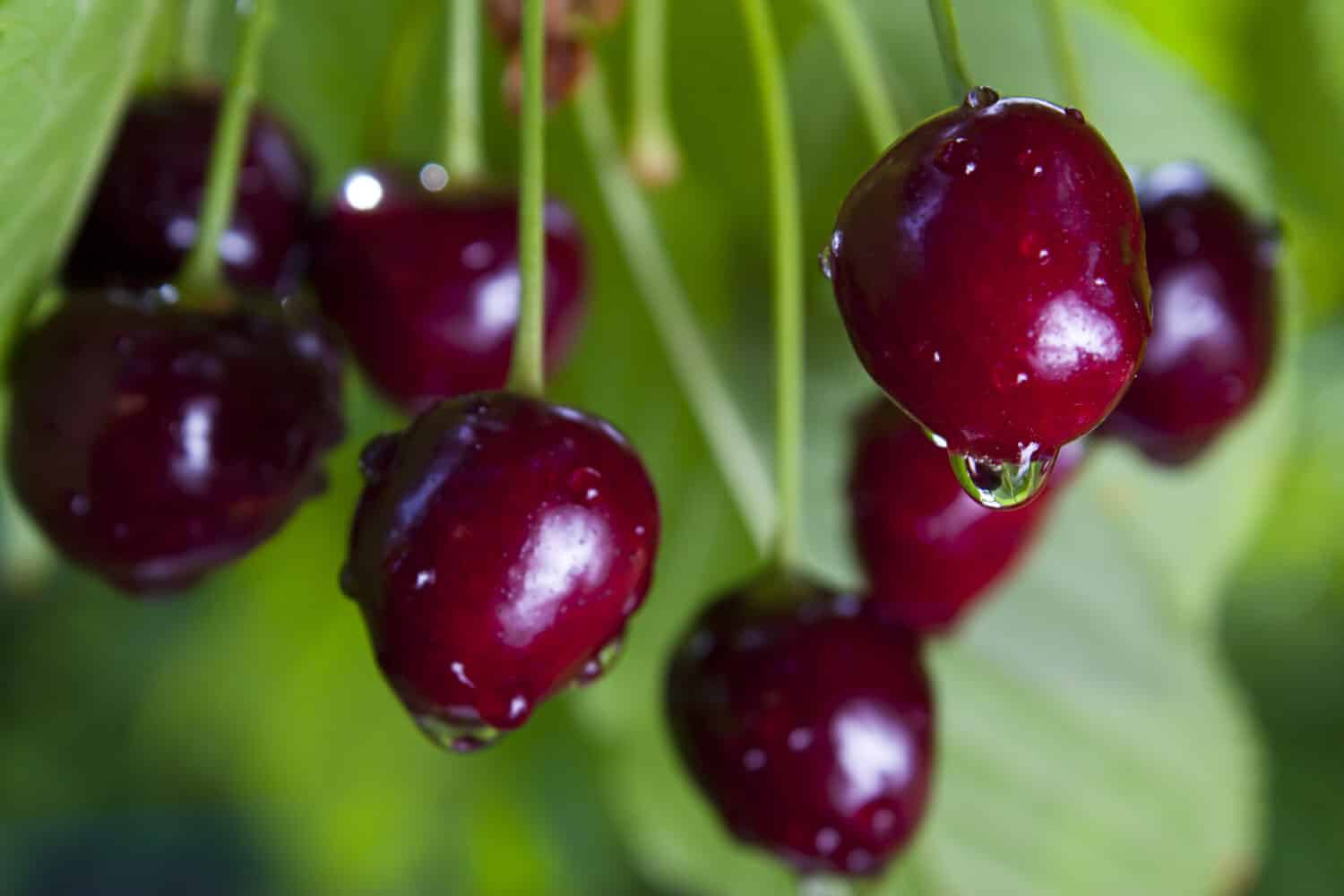
Black Tartarian cherry trees can reach up to 30 feet tall and wide.
Image: bjonesphotography, Shutterstock
©bjonesphotography/Shutterstock.com
Another fruit tree that thrives in Zone 7 is the black Tartarian cherry tree. These trees reach up to about 30 feet tall and wide. Black Tatarian cherry trees are best grown in USDA zones 4 through 8. These cherry trees need a lot of sunlight and space. Even if you don’t have a large space, you can still grow black Tatarian cherries if you plant a dwarf variety.
5. Celeste Figs
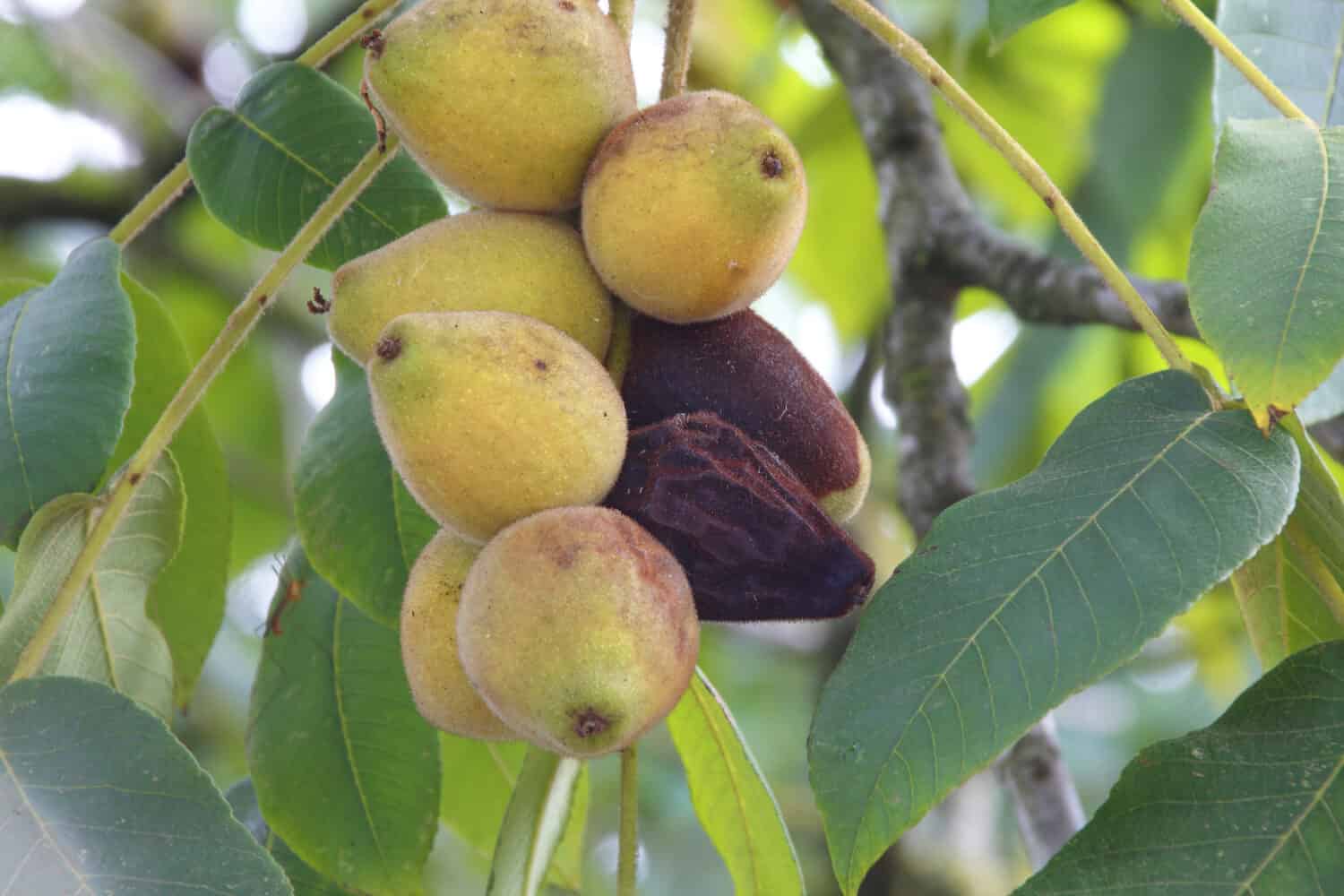
Celeste fig trees produce fruit in late summer, which are usually ripe by July or August.
©Eric Buermeyer/Shutterstock.com
Another wonderful fruit tree you can grow in USDA Zone 7 is the Celeste fig tree. This fig tree can reach impressive heights. It can also grow up to 10 feet wide. Celeste fig trees are cold hardy. You can plant them in USDA growing zones 6 to 11. This wide tree produces delicious figs in July.
6. Reliance Peaches

Reliance peach trees are cold hardy, perfect for northern states.
©Crisp0022/Shutterstock.com
Last but not least is the Reliance peach tree. This delicious fruit tree originates from New Hampshire in 1964. It’s a fast-growing plant that produces beautiful pink flowers and medium to large-sized juicy peaches. Reliance peach trees are great for northern states. They are cold hardy and grow in USDA zones 4 to 8. Some varieties may thrive in USDA growing Zone 3.
Summary of 6 Fruit Trees That Thrive in Zone 7
Most of these trees require a pollinator – so one lone tree won’t bear fruit.
| Fruit Tree | Size | Years to Bear Fruit | |
|---|---|---|---|
| 1 | Granny Smith Apples | 14 feet tall and 16 feet wide | 3 – 5 |
| 2 | Honeycrisp Apples | 14 – 18 feet tall and 12 – 15 feet wide | 7 – 8 |
| 3 | Moongold Apricots | 15 feet tall and 15 feet wide | 5 |
| 4 | Black Tartarian Cherries | 30 feet tall and wide | 4 – 5 |
| 5 | Celeste Figs | 10 feet tall and wide | 1 – 2 |
| 6 | Reliance Peaches | 20 feet tall and 25 feet wide | 2 – 4 |
The photo featured at the top of this post is © Shulevskyy Volodymyr/Shutterstock.com
Thank you for reading! Have some feedback for us? Contact the AZ Animals editorial team.







